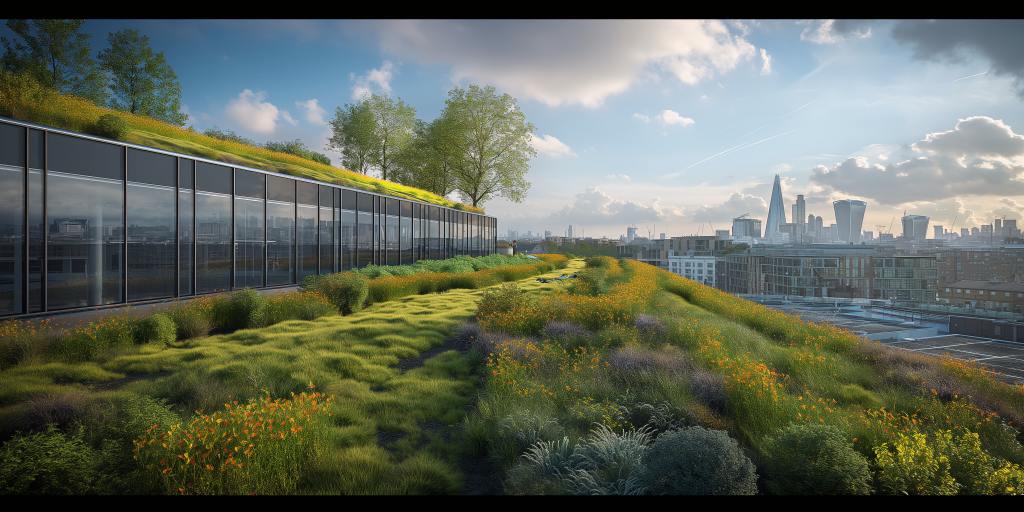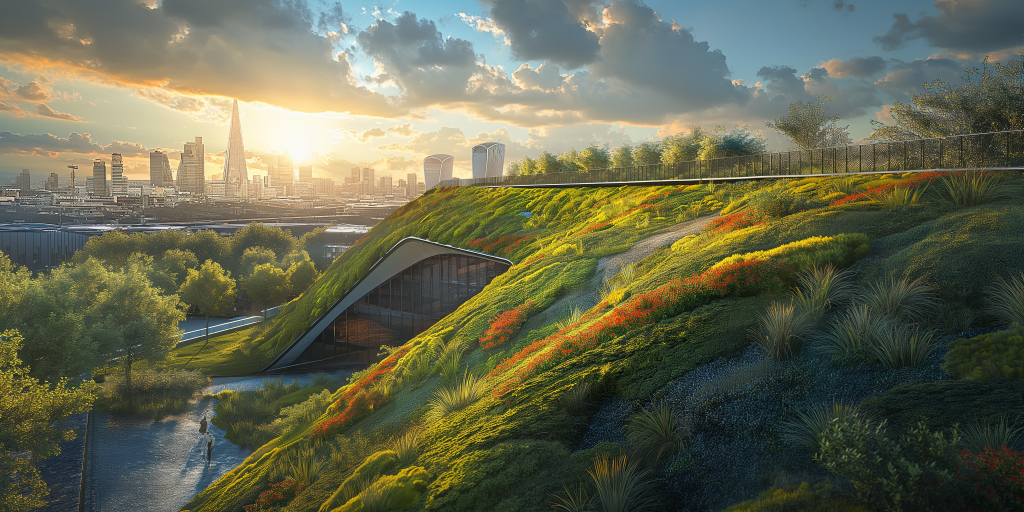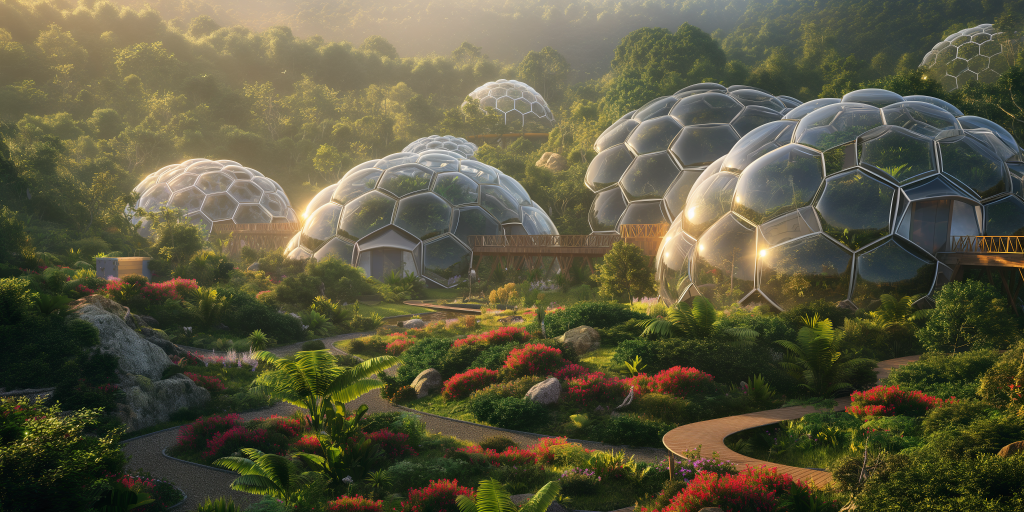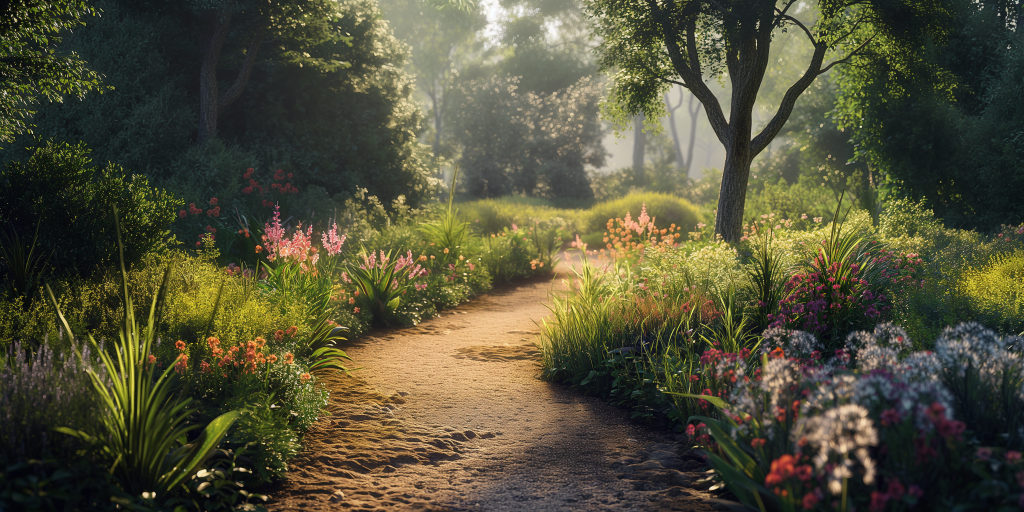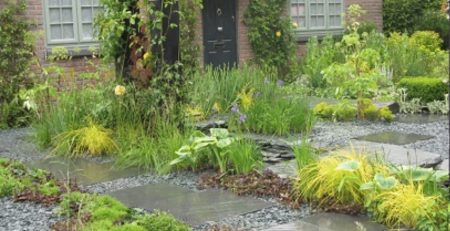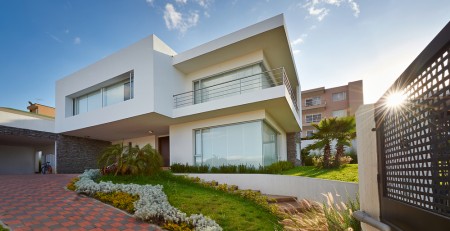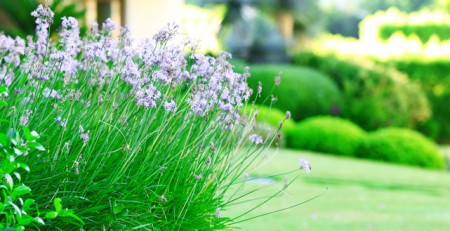Water-Efficient Landscaping for Commercial Properties: Smart Solutions for Sustainability
As the world becomes increasingly conscious of environmental sustainability, water-efficient landscaping for commercial properties has emerged as a pivotal strategy for conserving water and promoting ecological balance. This comprehensive approach helps reduce water bills, enhances the property’s aesthetic appeal, supports local biodiversity, and meets regulatory requirements. Let’s delve into the intricacies of water-efficient landscaping and explore smart solutions for sustainability.
Understanding Water-Efficient Landscaping
Water-efficient landscaping, often called xeriscaping, involves designing and maintaining landscapes to minimise the need for supplemental irrigation. This is especially crucial for commercial properties, which typically feature extensive landscaped areas that can significantly impact water consumption. The primary goal is to create a visually appealing and functional landscape that thrives with minimal water input.
Benefits of Water-Efficient Landscaping
Cost Savings: By reducing water usage, commercial properties can lower their utility bills substantially. Efficient irrigation systems and drought-resistant plants require less maintenance, further reducing costs associated with landscaping.
Environmental Impact: Conserving water helps mitigate the strain on local water supplies and reduces the energy required for water treatment and distribution. It also supports local ecosystems by maintaining natural water levels.
Regulatory Compliance: Many regions have water conservation regulations. Water-efficient landscaping ensures compliance with these laws, avoiding potential fines and penalties.
Enhanced Public Image: Demonstrating a commitment to sustainability can improve a company’s reputation. Environmentally conscious customers and tenants are more likely to support businesses prioritising ecological responsibility.
Key Components of Water-Efficient Landscaping
Soil Improvement
Healthy soil is fundamental to water-efficient landscaping. Improving soil quality enhances its ability to retain moisture and support plant growth. This can be achieved through:
- Adding Organic Matter: Incorporating compost or other organic materials into the soil improves its structure, increases water retention, and provides essential nutrients to plants.
- Aerating the Soil: Aeration involves perforating the soil to allow air, water, and nutrients to penetrate deep into the root zone. This process enhances root growth and improves water infiltration.
Plant Selection
Choosing the right plants is crucial for minimising water usage:
- Native Plants: These plants are adapted to the local climate and soil conditions, making them more resilient and requiring less water.
- Drought-Tolerant Plants: Species that survive with minimal water are ideal for xeriscaping. Examples include succulents, cacti, and certain grasses.
- Grouping Plants: Organising plants with similar water needs together ensures efficient watering and reduces waste.
Efficient Irrigation Systems
Implementing smart irrigation systems can significantly cut down on water usage:
- Drip Irrigation: This system delivers water directly to the plant roots, reducing evaporation and runoff.
- Smart Controllers: These devices use weather data and soil moisture sensors to adjust watering schedules automatically, ensuring plants receive the optimal amount of water.
- Zoning: Dividing the landscape into zones based on plant water needs allows for precise and efficient water distribution.
Mulching
Applying mulch around plants helps retain soil moisture, reduce weed growth, and moderate soil temperature. Organic mulches like wood chips or bark are particularly effective. Mulching conserves water and enhances the soil’s health and appearance.
Landscape Design
Designing the landscape with water efficiency in mind involves several strategic choices:
- Minimising Lawn Areas: Lawns typically require more water than other plants. Reducing or replacing lawn areas with drought-resistant ground covers can yield substantial water savings.
- Using Hardscapes: Incorporating elements like patios, walkways, and decorative stones reduces the need for watering.
- Rain Gardens: Creating depressions in the landscape designed to capture and infiltrate rainwater helps reduce runoff and promotes groundwater recharge.
Implementing Smart Solutions
Technology Integration
Leveraging technology can enhance water management efficiency:
- Weather-Based Irrigation Controllers: These controllers adjust irrigation based on real-time weather conditions, preventing overwatering during rainy periods and ensuring adequate watering during dry spells.
- Soil Moisture Sensors: These sensors monitor soil moisture levels, ensuring plants receive the optimal amount of water and reducing waste.
- Remote Monitoring and Control: Using smartphone apps or web interfaces to monitor and control irrigation systems allows for convenient and precise water management.
Sustainable Practices
Incorporating sustainable practices into landscaping can further enhance water efficiency:
- Rainwater Harvesting: Collecting and storing rainwater for irrigation reduces dependence on municipal water supplies.
- Graywater Systems: Reusing water from sinks, showers, and laundry for landscape irrigation is an effective way to conserve water.
- Permeable Pavements: These surfaces allow water to infiltrate the ground rather than running off into storm drains, promoting groundwater recharge.
Case Studies and Real-World Examples
To further illustrate the impact of water-efficient landscaping, let’s explore some real-world examples and case studies in the UK:
Case Study: The Eden Project, Cornwall
The Eden Project in Cornwall is a world-renowned environmental complex that showcases sustainable practices, including water-efficient landscaping. This site demonstrates several key strategies:
- Native and Drought-Tolerant Plantings: The Eden Project features a variety of native and drought-tolerant plants that thrive with minimal water.
- Efficient Irrigation Systems: The facility uses advanced irrigation techniques, such as drip irrigation and soil moisture sensors, to optimise water use.
- Rainwater Harvesting: The Eden Project collects and stores rainwater, which is used for irrigation purposes, significantly reducing its reliance on municipal water supplies.
This holistic approach conserves water and enhances the educational and aesthetic value of the Eden Project’s landscapes.
Case Study: King’s Cross Development, London
The King’s Cross Development in London is a large urban regeneration project that integrates water-efficient landscaping throughout its design:
- Green Roofs and Walls: Many buildings in the development feature green roofs and walls planted with drought-tolerant species. These green spaces reduce the urban heat island effect and require less water.
- Smart Irrigation Systems: Advanced irrigation technologies, including weather-based controllers and soil moisture sensors, ensure efficient water use across the landscaped areas.
- Permeable Surfaces: The development incorporates permeable pavements and other materials that allow water to infiltrate the ground, reducing runoff and promoting groundwater recharge.
These measures have enabled King’s Cross to maintain vibrant green spaces while minimising water consumption.
Case Study: The National Trust’s Water Conservation Initiatives
The National Trust, a UK conservation organisation, has implemented several water-efficient landscaping projects across its properties:
- Native Plant Restoration: At properties like Wimpole Estate in Cambridgeshire, the National Trust has restored native plant species that are well-adapted to the local climate and require minimal watering.
- Rainwater Harvesting Systems: The Trust has installed rainwater harvesting systems at several sites, using collected rainwater for irrigation and other purposes.
- Efficient Irrigation Practices: The National Trust employs drip irrigation and other efficient watering methods to minimise water use.
These initiatives demonstrate the organisation’s commitment to sustainability and water conservation.
Maintenance and Monitoring
Regular maintenance and monitoring are essential to ensure the landscape remains water-efficient:
- Routine Inspections: Regularly checking for leaks, broken sprinklers, and other issues helps maintain the irrigation system’s efficiency.
- Seasonal Adjustments: Adjusting irrigation schedules based on seasonal changes ensures plants receive the right amount of water throughout the year.
- Education and Training: Training maintenance staff on water-efficient practices and technologies ensures consistent and effective implementation.
Future Trends in Water-Efficient Landscaping
As technology and sustainability practices continue to evolve, several trends are emerging in the field of water-efficient landscaping:
Integration of IoT and AI
The Internet of Things (IoT) and Artificial Intelligence (AI) are revolutionising water management in landscaping:
- IoT Sensors: These devices provide real-time data on soil moisture, weather conditions, and plant health, allowing for precise water management.
- AI-Driven Analytics: AI can analyse data from IoT sensors to optimise irrigation schedules, predict water needs, and identify potential issues before they become problems.
Use of Recycled and Treated Water
Recycled and treated water is becoming increasingly important for sustainable landscaping:
- Graywater Systems: These systems reuse water from sinks, showers, and laundry for irrigation, reducing the demand for fresh water.
- Reclaimed Water: Treated wastewater from municipal sources can be used for irrigation, providing a sustainable alternative to fresh water.
Advancements in Plant Breeding
Advancements in plant breeding are producing new varieties of drought-tolerant plants:
- Genetically Modified Plants: Researchers are developing plants that require less water and are more resilient to drought conditions.
- Native Plant Restoration: Efforts to restore native plant species in urban landscapes help promote biodiversity and reduce water usage.
Conclusive Thoughts
Water-efficient landscaping for commercial properties is not just a trend but a necessity in our increasingly resource-conscious world. Focusing on soil improvement, plant selection, efficient irrigation, mulching, and smart landscape design can help commercial properties achieve significant water savings while maintaining beautiful and functional landscapes. Integrating technology and sustainable practices further enhances the effectiveness of these strategies, ensuring long-term water efficiency and sustainability.
Commercial properties can enjoy cost savings, regulatory compliance, and an enhanced public image by adopting water-efficient landscaping while preserving our planet’s precious water resources. This win-win approach underscores the importance of sustainability in today’s business landscape. Let’s embrace these smart solutions and create landscapes that thrive harmoniously with the environment.


